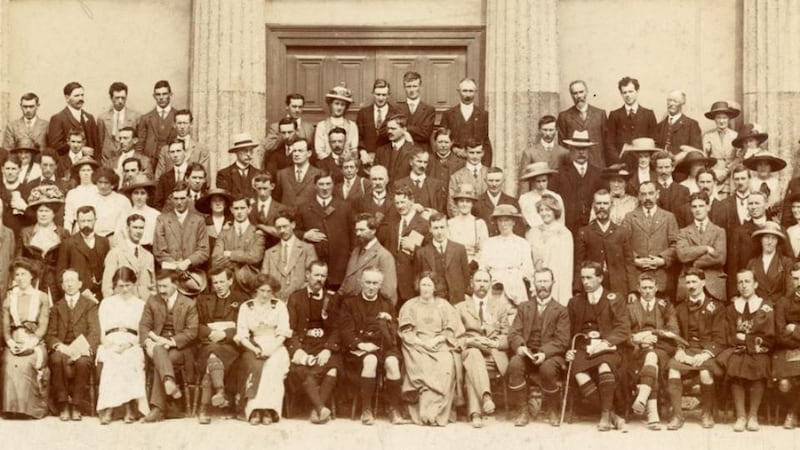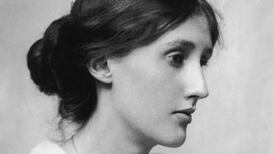The history of Irish medicine does not lack for revolutionary women. In 1919 Dr Kathleen Lynn co-founded St Ultan's Hospital for Infants in Dublin and became a Sinn Féin TD in the 1920s, while Dr Dorothy Price was a medical officer to a Cork brigade of the IRA and played a key role in the eradication of TB.
But what about psychiatry? The asylums cast a uniquely long shadow over 20th-century Ireland and, as a practising psychiatrist and historian, I’ve always wondered: where were the medical reformers seeking to revolutionise Irish mental health care? Who were the men and women, if any, who sought to build a better, fairer world for the mentally ill as the new Irish State emerged, with all its promise and possibility?
Almost 10 years ago, after a lecture I gave on the history of psychiatry, a retired doctor handed me a tattered newspaper clipping that her late husband had kept since 1944. It was an obituary about a certain Dr Ada English who, it turned out, was the very person I had been looking for.


Ada English (1875-1944) grew up in Mullingar, where her father was a pharmacist and town commissioner. She studied medicine at the Catholic University School of Medicine, Cecilia Street (now Temple Bar), and worked at the Mater Misericordiae Hospital, Richmond Asylum, and Temple Street, before becoming assistant resident medical superintendent at Connaught District Luantic Asylum in Ballinasloe in 1904. Ada spent four decades working tirelessly at the Ballinasloe hospital, until her retirement in 1942.
Ada was deeply involved in Irish politics, being tutored by Pádraig Pearse in the Irish language in the years leading up to the Easter Rising and joining Cumann na mBan. In 1916, she reportedly served as medical officer with Liam Mellows, who led several hundred Irish Volunteers in attacks on the Royal Irish Constabulary in Galway.
Five years later, towards the end of the War of Independence, Ada was arrested for possessing nationalist literature, tried by court martial in Galway, and "sentenced to nine months imprisonment" for possession of "a considerable quantity of seditious literature … including papers relating to the Cumann na mBan, details of activities, and Dáil Eireann Convention" (Irish Times, March 12th, 1921). Ada was one of 50 women imprisoned in 1921 as a result of the War of Independence, although she was released after just six months, owing to ptomaine poisoning (food poisoning).
In May 1921, Ada was elected to Dáil Eireann for the National University of Ireland constituency and, on August 26th, 1921, spoke in the Dáil in strong support of the nomination of Éamon de Valera as President of the Irish Republic:
“There is no necessity for me to praise Éamon de Valera to the men and women of the Dáil or to the men and women of Ireland. He has been tested in times of the greatest stress both as a soldier and statesman. We all know how he has come out of it – and the enemy knows it.”
Ada later vehemently opposed the Anglo-Irish Treaty which she described as "a complete spiritual surrender, and it would not bring peace but bitter division to the country" (Irish Times, January 5th, 1922). Ada lost her Dáil seat in the election of June 1922 and participated on the anti-Treaty side in the Irish Civil War, in which she reportedly served with Cathal Brugha at the Hammam Hotel.
Ada’s strongly nationalist views and political convictions were also apparent in her work at Connaught District Lunatic Asylum in Ballinasloe: shortly after her arrival in 1904, she managed to have the image of Queen Victoria replaced by the Galway Arms on the buttons of staff uniforms.
When Ada commenced work in Ballinsloe, the asylum was an enormous institution with vast grounds and 1,293 inpatients. Over the following four decades, Ada introduced many changes in order to coax Irish attitudes toward mental health out of the dark ages, and was especially concerned that patients be humanely treated and gainfully occupied. She oversaw the expansion of occupational therapies, including horticulture and farming, and was particularly keen that patients have weekly trips to the cinema in Ballinasloe, especially when the hospital’s own cinema projector was broken. At national level, she campaigned fiercely for much-needed reform of mental health legislation.
Locally, Ada was very well-liked and referred to as “Lady English” owing to her dignified bearing. Ada loved to tour the highways and byways around the town in her horse and trap, driven by a patient, and would stop and talk with those she met on the road. One man, who met Ada frequently when he was a child, remembers her as being of light build, invariably well wrapped-up and always accompanied by her dogs, Victor, Isabel and Judy. Ada would speak to the boy in Irish and took particular interest in his schooling, bidding farewell with a cheery “Beannacht Leat!”
In January 1944, Ada died in Ballinasloe and was buried, at her own request, alongside her patients in Creagh Cemetry, adjacent to St Brigid’s Hospital.
Ada’s life was as remarkable as it was fruitful. But even after researching her life in depth for my biography, certain mysteries remain. Ada never married; was this because marriage would have placed her employment at risk? Ada was friendly with de Valera and there are numerous reports that de Valera hid in the Ballinasloe asylum from time to time; can such reports ever be proven definitively? And did Ada really serve with Cathal Brugha at the Hammam Hotel?
Ada did not make it easy to answer any of these questions: she died without leaving a diary, letters or a will. Her belonging were publicly auctioned. And so, for seven decades, Ada English vanished from Irish history.
These circumstances added greatly to the challenge of my task as Ada’s biographer. But as I researched her life, Ada revealed herself gradually and steadily, at her own pace. She would not be hurried. Nonetheless, detail after detail emerged, and the jigsaw finally came together to reveal a life that was extraordinary, exciting and richly worth remembering. As with all historical figures, certain mysteries remain, but that is only to be expected: Ada, as I now know, was always going to have the final say.
Professor Brendan Kelly is Associate Clinical Professor of Psychiatry at UCD School of Medicine and Medical Science, and author of Ada English: Patriot and Psychiatrist (Irish Academic Press, iap.ie)
















